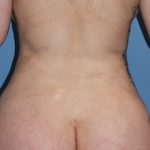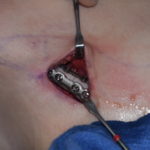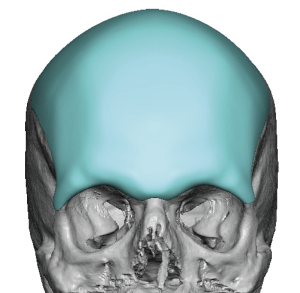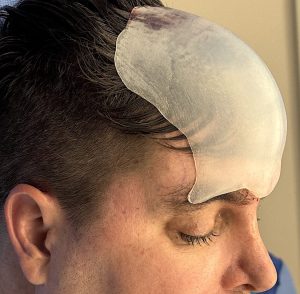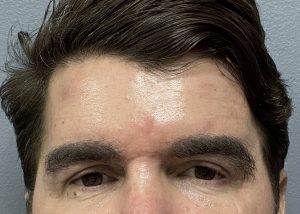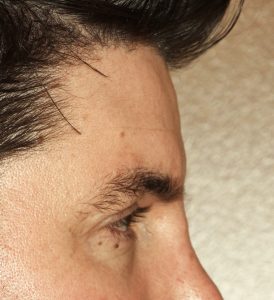Custom Forehead Augmentation in Men: A Case Study
Background
While the forehead is not the initial focus of facial masculinization for many male patients, it often becomes relevant after lower facial enhancements—such as jawline augmentation—are complete. At that point, attention turns to balancing the upper third of the face with what has been surgically achieved below. This may involve correcting a true forehead shape deficiency or addressing a subtle contour irregularity to create a more masculine appearance.
Male forehead aesthetic concerns generally fall into three categories:
-
Lack of brow bone projection
-
Excessive backward slope of the forehead
-
Insufficient width or a forehead that appears too narrow
While one of these may be the dominant issue, most patients present with a combination of all three to varying degrees. Importantly, it is often not possible to correct one element without influencing the others, since forehead shape is a blend of these structural components.
Forehead Implant Design Considerations
Designing a custom forehead implant involves several key dimensional decisions:
-
Brow Bone Component
Determine whether brow bone enhancement is needed as part of the implant. For many men, a comprehensive augmentation including the brow bone is desirable. -
Forehead Slope
If slope correction is required, the implant must extend sufficiently back over the top of the head to achieve the desired angle and smooth transition. -
Forehead Width
When additional width is needed, the implant must extend beyond the bony temporal line, based on the desired increase in horizontal projection. -
Temporal Line Prominence
Decide whether visible bony temporal line prominences are part of the aesthetic goal or should be blended over.
Case Study
This male patient was undergoing a lower facial enhancement with a large custom jawline implant. To maintain facial harmony and proportionality, he elected to have an upper facial (forehead) augmentation performed concurrently. His primary concern was a narrow forehead.
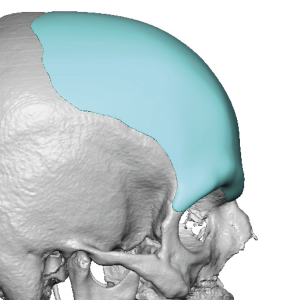
-
Brow bone enhancement while preserving the patient’s original forehead slope
-
Posterior extension beyond the coronal suture line to ensure a smooth transition into the upper forehead
-
Lateral extension past the bony temporal line onto the temporal fascia and downward along the tail of the brow bone
-
Total implant volume: 75cc
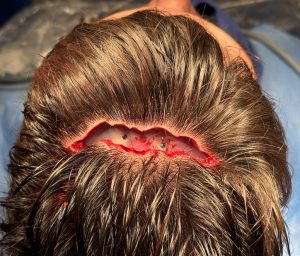
Results
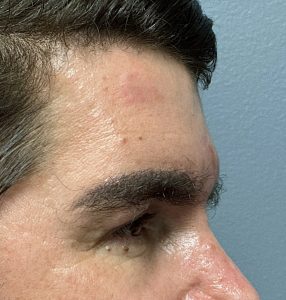
-
Increased brow bone projection
-
Noticeably greater forehead width
Reflections on Forehead Implant Design
Custom forehead implants—especially those involving brow bone augmentation—are among the most complex facial implants to design. This complexity arises from the forehead’s large surface area and the multidimensional nature of the correction, most of which is not visible in standard profile views.
One of the most challenging aspects of design is determining the appropriate width. This is particularly critical in male patients, where a broader, flatter forehead shape is essential to achieving a masculine aesthetic.
Key considerations include:
-
Whether the added width can remain within the bony confines of the forehead, or must extend onto the deep temporal fascia
-
Ensuring the implant’s edges feather smoothly into surrounding tissue to avoid visible or palpable borders
Key Takeaways
-
Comprehensive augmentation of the upper third of the face is best achieved using a custom-designed implant.
-
Effective implant design must address:
-
Surface area coverage
-
Variations in thickness
-
Forehead slope
-
Lateral extension beyond the bony temporal lines
-
Incision planning and length
-
-
Narrow forehead corrections often require greater lateral thickness than central projection to achieve a natural, masculine contour.
Dr. Barry Eppley
World-Renowned Plastic Surgeon


